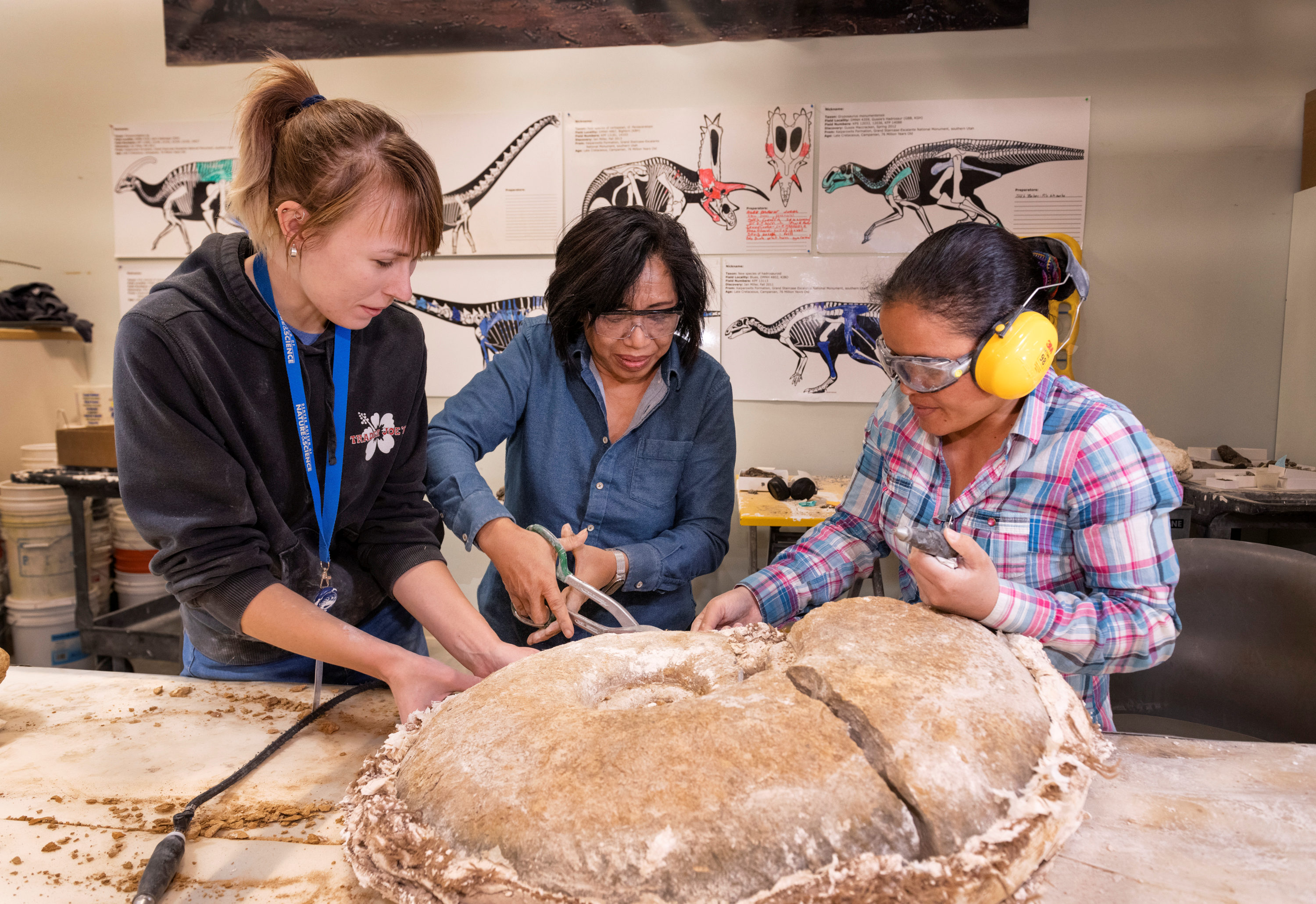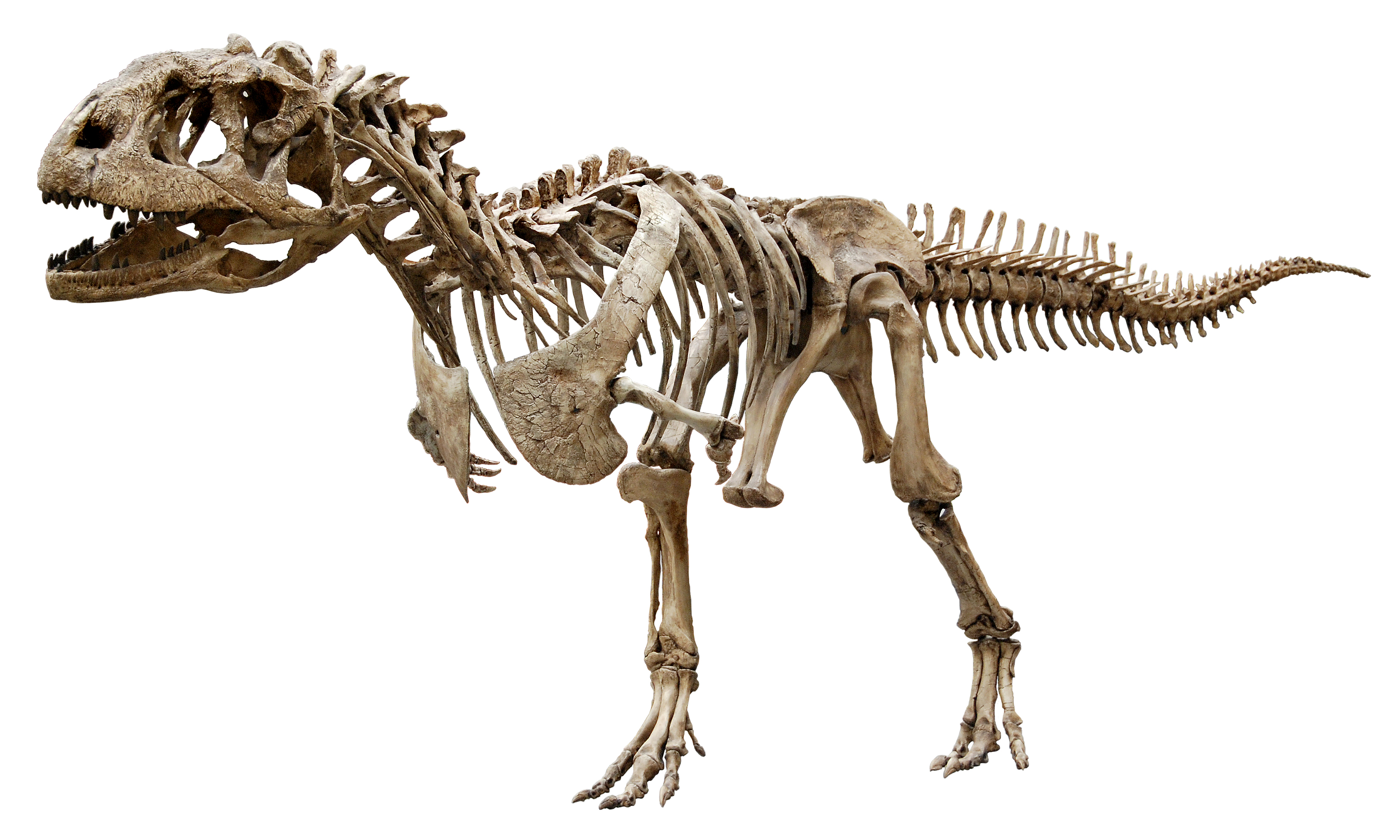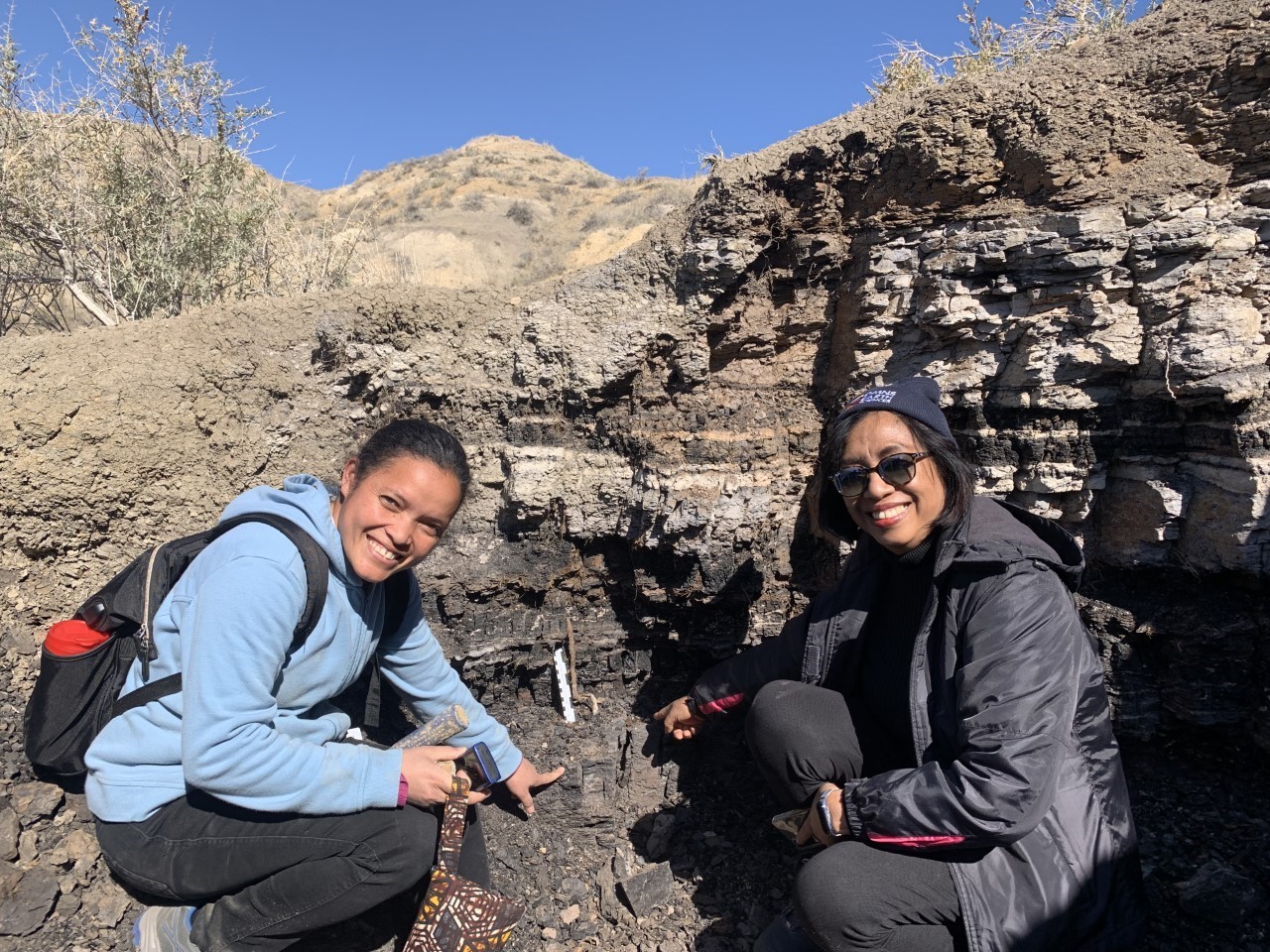
This trove of fossils features a cast of characters new to science and ripe for a Cretaceous circus: a basketball-sized, armored frog; a vegetarian, pug-nosed crocodile; a small, meat-eating dinosaur with front teeth that point forward; a bird with a delicate beak built like no other; and a mammal with incomparable holes in its skull. The take-home message? If you evolve on an island in isolation long enough, you get weird. It turns out, this weirdness is important because such fossils provide Rosetta Stone-like missing links to understand deep-time evolutionary adaptation and diversity.

Skeleton of the theropod dinosaur Majungasaurus crenatissimus from the Late Cretaceous of Madagascar. (Photo/Lucille Betti-Nash)
The fossils in this unparalleled assemblage – including exquisitely preserved, complete skulls and skeletons – were collected in partnership with paleontology colleagues from the University of Antananarivo in Madagascar over the last 30 years. The collection is currently housed at the Denver Museum of Nature & Science where the fossils are being carefully extracted in our preparation labs, rehoused in archival-quality supports and containers, cataloged in our Collections facility, imaged with CT and surface scanners, duplicated as casts and 3D prints and made ready to be studied by scholars from around the world.
But, there’s a problem. Much of the work needed to decipher these fossils, whether it be their preparation from surrounding rock matrix or their imaging, replication or storage, should ideally be happening in the country in which they were discovered. Unfortunately, that is not yet possible in Madagascar, one of the poorest nations on Earth. Infrastructure, equipment, supplies and training are insufficient.

Fossils being moved into the new fossil collections facility, stocked with gently used specimen cabinets from the Denver Museum of Nature & Science, at the University of Antananarivo in September 2022. (Photo/Patrick O’Connor)
Through collaboration with various government and university entities in Madagascar, we’re working to help change that. The near-term goal is to return most specimens, including the scientifically most important ones called holotypes, to Madagascar in great shape and ready for study, with representative specimens also incorporated into the Museum collections. The long-term goal is to enhance capacity in the country itself for future work on this and other projects that our Malagasy colleagues will undertake.
With that long-range goal in mind, we built a collections facility at the University of Antananarivo in 2015 with funding from my former employer, Stony Brook University. The facility consists of two large rooms for collections, as well as a classroom and a collections manager’s office. After the move into the Avenir Collections Center, many of us have also donated books and scientific articles from our libraries to help equip this first-of-its-kind-in-Madagascar facility and educate future generations of Malagasy paleontologists.
Through the years, we’ve provided, and continue to provide, formal and informal training opportunities. We’re strongly involved with our colleagues at the University of Antananarivo in training Malagasy graduate students. This has been accomplished through participation in field work by serving on student research committees and by giving seminars and workshops in Madagascar. To date, 32 Malagasy graduate students and young professionals have participated in field expeditions (nine of them multiple times) and received extensive training in paleontological field techniques. We’ve also served as advisors and committee members for seven master's theses and three Ph.D. dissertations by Malagasy students.
With a grant from the David B. Jones Foundation, we recently began another way of investing in Madagascar paleontology so that our Malagasy colleagues can continue to grow their own collections and scholarly effort. In October 2022, we brought two paleontologists from the University of Antananarivo to Denver for two months to learn fossil preparation skills and collections management methods from our Earth Sciences and Integrative Collections staff. These paleontologists were Hasina Randrianaly, a professor in geology and invertebrate paleontology, and Bakoli Rakotozafy, a graduate student in vertebrate paleontology. They were sponges for this new access to knowledge.

Graduate student Bakoli Rakotozafy, left, and Professor Hasina Randrianaly, right, conducting fieldwork in the Denver Basin, pointing to the time in Earth’s history when dinosaurs went extinct. (Photo/Tyler Lyson)
“I learned so much that I can apply in so many different ways in Madagascar; it was a huge opportunity for me,” said Rakotozafy, who is currently studying the crocodiles from the Cretaceous of Madagascar for her Ph.D. dissertation.
Professor Randrianaly added, “As the one responsible for the fossil collection facility at the University of Antananarivo, applying the many things that I learned at the Museum and sharing them with my colleagues and students will substantially improve the conservation of fossils in Madagascar.”
Professor Randrianaly and Rakotozafy also took advantage of other opportunities: they diversified their networks by participating in the Geological Society of America annual meeting, by contributing to an international workshop on developing and sharing collections databases hosted at the Denver Museum of Nature & Science, and by virtually attending the Society of Vertebrate Paleontology annual meeting, which was hosted in Toronto. They had the opportunity to learn new field approaches with a trip led by Museum curators James Hagadorn and Tyler Lyson to the Cretaceous/Paleogene (K/Pg) boundary located near West Bijou Creek, south of Strasburg, Colorado to see some of our local rock exposures. The K/Pg boundary is exposed there and is a mecca for all paleontologists!

DMNS fossil preparator Sadie Sherman working with Professor Hasina Randrianaly and graduate student Bakoli Rakotozafy to open a plaster jacket containing a large, coiled ammonite (fossil cephalopod related to today’s chambered Nautilus) from Madagascar. (Photo credit/Rick Wicker)
Through these various interactions, we’re continuing to learn about the challenges faced by our colleagues at the University of Antananarivo and co-developing strategies to address particular needs. For instance, many of the supplies that we use for preparing and storing specimens in perpetuity are simply not available in Madagascar, so we brainstormed to identify good, archival-quality substitutes. This is, and will be, an ongoing process.
Fortunately, near the end of Professor Randrianaly and Rakotozafy’s stay, we also obtained a three-year National Science Foundation collections grant that focuses on preparing, cataloguing and conserving the Madagascar collection. This grant allows us to provide further training for Rakotozafy; she has been able to extend her stay in Denver for another year to learn and apply additional skills in fossil preparation and collections management, and to further develop her Ph.D. dissertation.
In the meantime, we have more work to do. With the recent grant from the National Science Foundation and Rakotozafy’s help, we’ll continue to upgrade this important collection. The end result will make the specimens more accessible to current and future generations of Malagasy researchers, as well as for educational and public engagement opportunities. We hope they’ll inspire the next generation of Malagasy scientists and catalyze public interest in Madagascar’s rich natural heritage through various other initiatives.